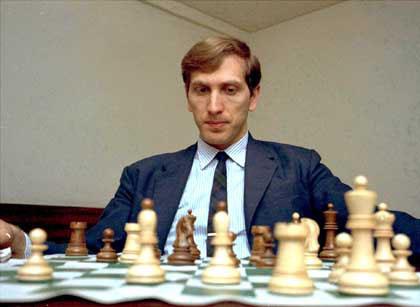What is New in Theory?
Submitted by chessbibliophile on Chess.com

never had any problem with the line and punished it with energetic, dynamic play. This month's update on Open Sicilian at ChessPublishing.com deals precisely with this move that has been a bugbear for Najdorf novices.
After 6. a4 Black has two options, 6...Nc6 and 6...e5. Let us consider the first.
6...Nc6 is a nice developing move and a "gentle" reminder to White that he has made b4 square available for the knight from where he can oversee actvity on the queenside. Among other things he can capture the White bishop if he chooses to take an active position on d3. If White plays Nxc6, he would only help Black with a fluid mobile centre after...bxc6. Moreover, the capture offers a semi-open 'b' file for Black, not to mention a wasted tempo for White. The second option, 6...e5
is also good as it preserves the option of developing the knight to d7 and forces the knight back to f3 (retreat to b3 does not offer much activity to the knight).Thereafter the Black queen occupies c7 preventing the development of the White bishop to c4 among other things. In this position Black can play...Be6 and aim for a freeing move...d5 when the opportunity presents itself.

Richard Palliser, the author of this section is an acknowledged expert on the Sicilian with hands-on experience. Here we see one of his own games with this line and his analysis is worth a look:
http://www.chesspublishing.com/content/4/index.htm
However, the pride of place in this review should go to Luke McShane's victory over Magnus Carlsen in London Classic 2010.

Although Magnus won the first prize, Luke was the moral victor, remaining undefeated and beating Magnus in style. Itmay be recalled that Magnus lost to another British player, Mickey Adams in the recent Chess Olympiad.

It would be nice to see the revival of the English school with Adams and McShane leading from the front.
For Luke this victory was sweet revenge as he had just lost to Magnus last year in the same London Classic Tournament.
The game itself is a bit of curiosity. I still remember seeing the position after Black's 9th move and wondering what the Black bishop was doing on h6 and why he had not castled. As in the previous encounter with Adams at the recent Olympiad Magnus tried to take his opponent out of the book only to find that he was behind in development, and when he tried to find forcing counterplay he was duly punished. The game itself is well-annotated by Nigel Davies in the section on flank openings. My only little plaint is that Davies doesn't explain why Black does not capture a piece that is readily offered to him at a critical moment. Probably he thought that the consequences were too obvious. However, I did find something interesting here and readers may check it out from the Move List. In his introduction to the opening Nigel Davies

mentions that it is less known and only Bent Larsen

employed it with success. That's a bit of surprise as any rookie could play a simple move like 5. Nf3. This only goes to show how many of us opt for what is in vogue instead of using a bit of common sense:
Luke McShane vs. Magnus Carlsen
London Chess Classic 2010 | English Opening | ECO: A37




























1. c4 c5 2. g3 g6 3. Bg2 Bg7 4. Nc3 Nc6 5. Nf3 d6 ( 5... Nh6 6. h4 d6 7. d3 ) 6. O-O Nh6 7. d4 cxd4 8. Bxh6 Bxh6 9. Nxd4 Ne5?! ( 9... Bd7 ) ( 9... Nxd4 10. Qxd4 O-O ) 10. Qb3 O-O 11. Rfd1 Nd7 12. Qa3 a5 13. b4!? ( 13. e3 ) 13... Ra6 14. b5 Ra8 15. e3 a4 16. Rab1 ( 16. Nxa4? Nc5 ) 16... Bg7 17. Ne4 Qb6 18. Nc6! Re8 ( 18... bxc6? 19. bxc6 Qc7 ( 19... Qxc6? 20. Nf6+ Nxf6 21. Bxc6 ) 20. cxd7 Bxd7 21. c5 d5 ( 21... dxc5? 22. Rb7! Qxb7 23. Nf6+ Bxf6 24. Bxb7 ) 22. Rxd5 ) 19. Nb4 f5?! ( 19... Qa5 ) 20. Nc3 ( 20. Nd5! Qd8 21. Ng5 Nc5 ( 21... Nf6 22. b6 Nxd5 23. cxd5 ) 22. b6 Rb8 23. Nc7 Rf8 24. Rb5 Bh6 25. Nxh7 Kxh7 26. Rxc5 ) [[20... Qc5? 21. Nxa4! Qa7 22. Na6! bxa6 23. b6 Nxb6 24. Rxb6 Rb8 25. c5 Be6 26. Rdb1 dxc5 27. Rb7 Rxb7 28. Rxb7 Qa8 29. Nxc5 ( 29. Rxe7 Qd8 30. Rxe8+ Qxe8 31. Nxc5 Bf8 ) 29... Qc8 ( 29... Bf7 30. Rxe7 ) 30. Qxa6 Bf7 31. Bc6 Rd8 32. Nd7 Rxd7 ( 32... Be6 33. Qb6 Bxd7 34. Bxd7 Rxd7 35. Rb8 ) 33. Bxd7 Qc1+ 34. Qf1 Qxf1+ ( 34... Qc2 35. Qb1 ) 35. Kxf1 Bc4+ 36. Kg1 Bxa2 37. Ba4 e5 38. f3 Bh6 39. Bb3+ Bxb3 40. Rxb3
There is a lot else on the site, be it the French or the Dragon. Do pay a visit and enjoy your stay.
http://www.chesspublishing.com/content/
» posted in Opening Theory





No comments:
Post a Comment